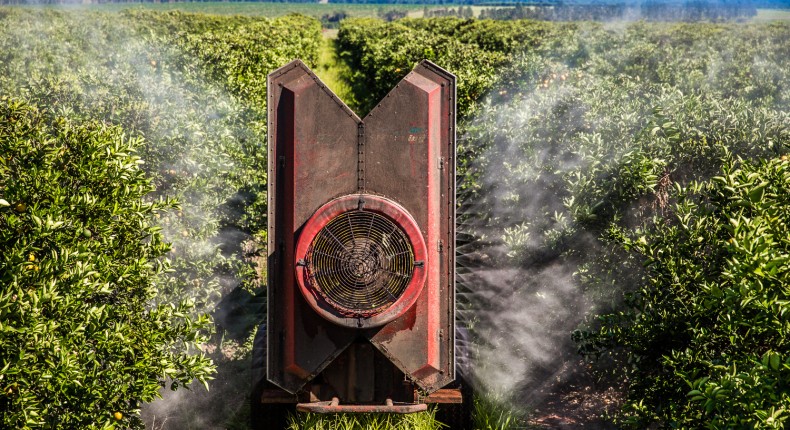13
out
Plan to spray categories: Videos

Control and monitoring are essential in order to spray in an economically efficient and environmentally sustainable way
In order to be effective when spraying the groves, it’s not enough to invest in technology, it’s also necessary to plan and pay attention to details in order for this operation to be economically efficient and environmentally sustainable. That is the main lesson presented by Brazilian citrus growers who have adopted different strategies and reached good results in phytosanitary control in their farms. One example is the citrus grower Mr. Frederico Lopes. Bachelor’s degree in Administration, he shares his time between managing 150 hectares of orange in his farm in the town of Tambaú, countryside of the state of São Paulo and working as a consultant in Markestrat. That’s why every inch of his property is carefully planned. In the case of spraying, the work begins even before the machines hit the field, with a conversation with technicians and operators in order to define the dosage of products. “It’s necessary that the whole team is well trained to assess the variables such as climate, wind, diseases, etc. From there, we stablish the best strategy to spray”, he says.
All this caution helps the grower to use just the absolutely necessary volume of product to keep the plants healthy, which avoids losses to his pocket and damages to the environment. But when we talk about spraying, there’s no “recipe” neither a “magical formula”. Each property has its own reality to which you have to adapt the managing. That is the lesson learned in the AgroMachado group, which has three thousand hectares of citrus, divided in six farms in São Paulo’s citrus belt. “It’s important to observe the reality of the farm to find the best solutions”, explains the manager of the group, Mr. Jonas Tadeu Barbosa. He is the responsible for every spraying done and nothing goes off the registered program in his worksheet that he carries everywhere he goes.
One of the examples of solution that he tells is the speed of the machines. After many studies, they realized that reducing the speed of the machines when applying, it was possible to reduce the volume of product applied. “In the case of citrus black spot, the volume of dosages applied was on average 50ml per cubic meter, when the average technical recommendation is 75ml per cubic meter”, he says. Another example that planning makes all the difference.
- |
